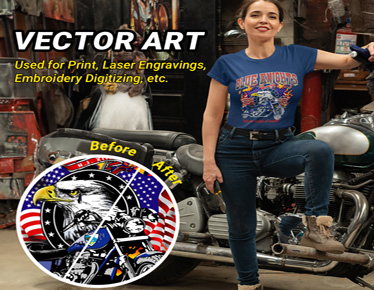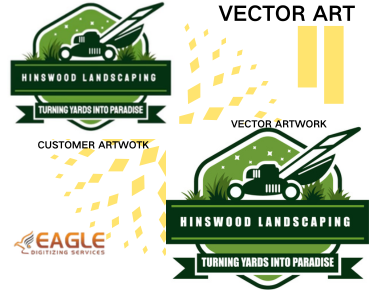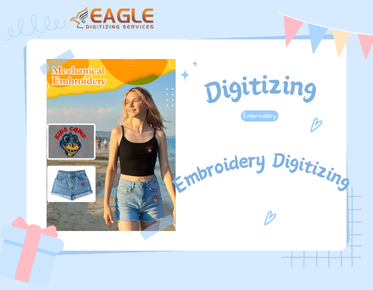Understanding Vector Artwork and Its Functionality
Vector artwork is a type of digital graphic that uses mathematical equations and geometric primitives such as points, lines, curves, and shapes to represent images. Unlike raster images, which are made up of pixels, vector images are resolution-independent, meaning they can be scaled to any size without losing quality. This makes them ideal for a variety of applications, from graphic design to large-scale printing.
The creation of vector artwork involves using software like Adobe Illustrator or CorelDRAW, where designers can manipulate paths and shapes to create intricate designs. These programs allow for precise control over every aspect of the image, including color, line thickness, and fill patterns. The flexibility and scalability of vector graphics make them a popular choice for logos, icons, and other design elements that require high-quality reproduction.
How Vector Artwork Works
At the core of vector artwork is the use of mathematical formulas to define the shapes and lines that make up an image. Each element in a vector graphic is defined by its own set of equations, which describe its position, size, and other attributes. This mathematical approach allows for infinite scalability, as the image can be recalculated at any size without losing detail or clarity.
Advantages of Vector Artwork
One of the primary advantages of vector artwork is its scalability. Because vector images are not made up of pixels, they can be resized to any dimension without becoming pixelated or blurry. This makes them ideal for use in a wide range of applications, from small icons to large billboards. Additionally, vector graphics are typically smaller in file size compared to raster images, making them easier to store and share.
Applications of Vector Artwork
Vector artwork is used in a variety of fields, including graphic design, advertising, and web development. Designers often use vector graphics to create logos, as they need to be reproduced at various sizes and on different media. In addition, vector images are commonly used in print media, such as brochures and posters, where high-quality reproduction is essential. The ability to easily edit and manipulate vector graphics also makes them a popular choice for creating complex illustrations and diagrams.
Vector Artwork in the Digital Age
With the rise of digital media, vector artwork has become increasingly important. As more content is consumed on digital platforms, the need for scalable and high-quality graphics has grown. Vector graphics are well-suited to meet this demand, as they can be easily adapted for use on websites, mobile apps, and other digital platforms. Additionally, the widespread availability of vector editing software has made it easier than ever for designers to create and share vector artwork.
Challenges and Considerations
While vector artwork offers many advantages, there are also some challenges to consider. One of the main limitations is that vector graphics are not well-suited for representing complex images with a lot of detail, such as photographs. In these cases, raster images may be a better choice. Additionally, creating vector artwork can be more time-consuming than working with raster images, as it requires a higher level of precision and attention to detail.
Conclusion
In conclusion, vector artwork is a powerful tool for creating scalable and high-quality graphics. Its use of mathematical equations allows for infinite scalability, making it ideal for a wide range of applications. Whether you're designing a logo, creating a digital illustration, or developing a website, vector graphics offer the flexibility and precision needed to bring your vision to life. For those looking to transform their creative visions into scalable designs, Eagle Digitizing excels in delivering professional vector art services.



